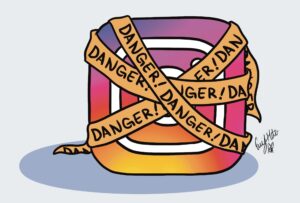
In response to the growing youth mental health crisis, the United States Surgeon General Dr. Vivek H. Murthy is calling on Congress to require a “warning label” on social media platforms.
In an opinion piece published in The New York Times, Dr. Murthy points to social media as an “important contributor” to the growing mental health crisis among young people, characterizing it as an “emergency.” Social media warning labels would work similarly to health warnings on tobacco products, like cigarettes, by explicitly informing users of safety issues, raising awareness about health risks and changing behavior.
Dr. Murthy’s call for warning labels on social media is another attempt in a growing list of actions by the U.S. government to regulate technology companies and protect children from online dangers. For example, in 2023, more than 40 states sued Meta for designing products that are “deliberately addictive” and “exploit and manipulate” children. The ongoing lawsuit also cites a violation of consumer protection and child safety laws.
Despite some positive aspects of social media, such as staying in touch with friends and family, joining online communities and expressing creativity, it poses significant mental health risks for children and adolescents. According to the U.S. Department of Health and Human Services, children who spend more than three hours a day on social media are at “double the risk” of developing mental health problems, such as depression and anxiety. This data is especially concerning because adolescents spend an average of 3.5 hours a day on social media, thus increasing the likelihood of experiencing severe mental health issues.
Additionally, 46% of adolescents between the ages of 13 and 17 report that social

media makes them “feel worse” about their body image. Younger children on social platforms are also vulnerable to other harmful experiences, including cyberbullying, harassment and social comparison — further lowering their self-esteem and increasing feelings of loneliness.
The growing youth mental health crisis has spurred bipartisan action across the nation. More than a dozen states are banning smartphones during school hours to curtail social media usage. In 2019, Governor Newsom signed a law that authorized California school districts to impose limits or bans on smartphones in classrooms. The Los Angeles Unified School District (LAUSD), the second-largest district in the nation, has voted to ban smartphone usage in school starting January 2025. However, both Gov. Newsom and the LAUSD have not specified how they plan to enforce school cell phone bans.
Similarly, Gov. Ron DeSantis — Newsom’s political rival — passed a more restrictive ban on cell phone usage in classrooms that blocks media platforms through “campus wireless systems.”
Other states, such as Utah, Virginia, Vermont, Oklahoma and Indiana, are also calling on school districts and educational leaders to adopt similar measures to remove smartphones during school hours.
Bipartisan support for reducing phone usage at the local level is largely due to Congress’s inability to pass meaningful legislation on this issue — leaving state governors to take matters into their own hands. However, federal-level intervention is necessary to address the youth mental health crisis more effectively on a large scale. To protect all children online, tech companies must be held accountable for perpetuating dangerous addictive features on their platforms.
These social media features include algorithms that log behavior and collect user data to generate content that keeps users engaged with the app longer. In addition, constant app alerts and the ability to “infinitely scroll” make disengagement nearly impossible for users — especially for children and adolescents who are more susceptible to entrapment of these design features.
Congress must require tech companies to disclose information regarding the safety and public health impacts of their platforms. By collecting annual assessments on children and adolescent users, federal policymakers can create more informed policies and safety measures to protect children’s online safety.
Educational leaders can also develop “digital and media literacy curricula” in schools to prepare students on how to use social media and protect themselves online. Media literacy lessons, for example, can teach students how to practice safe online habits and digital resistance to prevent cyberbullying and online harassment. With approximately 93% of American teenagers on social media platforms daily, educating students on how to responsibly use social media is a better approach than restrictive school phone bans.
Not everything about social media is bad. However, children need to understand what they are getting themselves into when they open their first social media account. While more must be done to protect children on social media, Dr. Murthy’s warning labels are a much-needed first step to increasing awareness of the dangerous health effects of this ubiquitous medium. Only then will young people and parents begin to temper its use.







